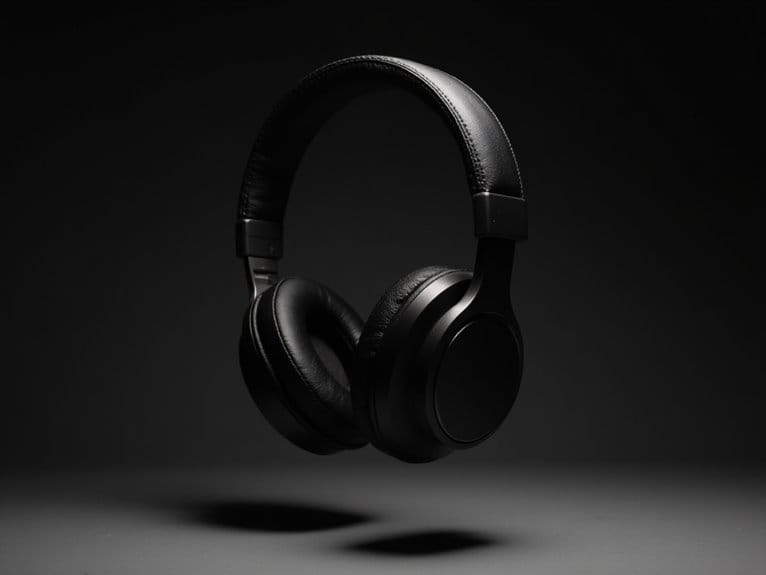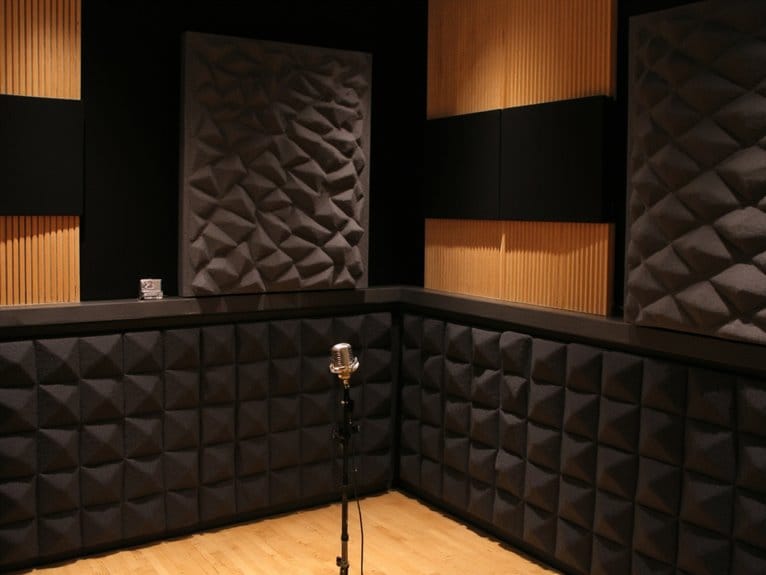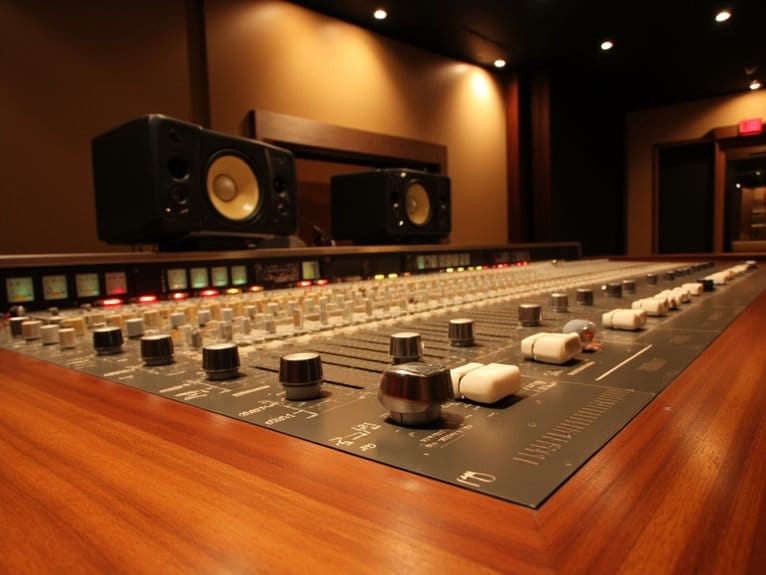De-essing Techniques: Taming Harsh Frequencies
You’ll tame harsh sibilant frequencies by targeting the 4-10 kHz range where piercing “s” sounds live, though some extend as low as 1.5 kHz depending on your vocalist and microphone setup. Manual editing gives you surgical precision over each problematic sibilant, while plugin-based de-essers offer time-saving automation with dynamic threshold controls that adapt to varying vocal intensity. Place your de-esser after compression to prevent amplifying those peaks, and you’ll discover the nuanced strategies that separate amateur from professional results.
We are supported by our audience. When you purchase through links on our site, we may earn an affiliate commission, at no extra cost for you. Learn more.
Notable Insights
- Target sibilant frequencies between 4-10 kHz using dynamic compression that reduces gain only when harsh sounds exceed the threshold.
- Place de-essers after compression in your signal chain to prevent amplification of sibilant peaks during vocal processing.
- Manual editing provides surgical precision for individual sibilants but requires more time than automated plugin-based solutions.
- Use crossfading techniques when manually editing to create smooth transitions and avoid audible cuts in the vocal track.
- Set moderate threshold levels to preserve vocal brightness while taming harshness, avoiding over-processing that dulls the overall sound.
Understanding De-Essing Fundamentals and Target Frequencies
Most vocal recordings contain those sharp, piercing sibilant sounds that make listeners wince. While you might think a simple EQ cut would solve the problem, de-essing offers a far more sophisticated solution that I’ve found essential in my audio work.
Understanding de-essing basics starts with recognizing that this dynamic compression technique targets specific frequency ranges where sibilance occurs, typically between 4 kHz and 10 kHz. Though I’ve encountered cases where harsh “s” sounds extend as low as 1.5 kHz depending on the vocalist and microphone setup.
Unlike static EQ cuts that affect your entire signal, de-essers intelligently detect excessive amplitude in these frequency ranges and apply gain reduction only when sibilant sounds exceed your set threshold. This approach preserves the vocal’s natural brightness while eliminating harshness.
Manual Techniques Vs Plugin-Based Approaches
When you’re faced with taming sibilance in your vocal recordings, you’ll need to choose between the surgical precision of manual editing and the efficiency of plugin-based solutions, each offering distinct advantages that I’ve found suit different situations and workflows.
Manual de essing gives you complete control over each sibilant, letting you clip and volume-ride problematic sections without any plugin artifacts or processing coloration. However, it’s incredibly time-consuming and challenging to maintain consistent results across lengthy takes.
Plugin-based approaches offer superior time efficiency through automated detection and processing, though they risk over-processing or dulling your vocals if not carefully dialed in.
- Visual waveform inspection helps identify sibilance peaks for precise manual editing
- Dynamic threshold controls in plugins adapt to varying vocal intensity levels
- Crossfading techniques guarantee smooth transitions between processed audio regions
Signal Chain Placement and Parameter Optimization
While plugin selection matters greatly, I’ve discovered that proper signal chain placement and parameter optimization often make the difference between transparent sibilance control and vocal processing that screams “amateur hour.” The fundamental rule I follow places de-essers after compression in most scenarios, since compressors tend to bring sibilant peaks back up after you’ve carefully tamed them, forcing you into more aggressive de-essing settings that can rob your vocals of their natural character.
Your de esser placement affects how other dynamic processes interact with sibilant frequencies, requiring careful consideration of your entire signal flow.
When using directional microphones for vocal recording, understanding their pickup patterns becomes crucial since cardioid and supercardioid capsules naturally emphasize certain frequency ranges that may require more targeted de-essing approaches. Professional mixers typically provide built-in phantom power for condenser microphones, ensuring optimal signal quality before any de-essing processing begins.
| Signal Chain Position | Benefits | Drawbacks |
|---|---|---|
| Before Compression | Prevents compressor from amplifying sibilance | Requires more aggressive settings |
| After Compression | More transparent, gentler processing | May need additional fine-tuning |
| After EQ Boosts | Addresses EQ-enhanced sibilance | Less effective on naturally harsh vocals |
On a final note
You’ve now got the tools to tackle those piercing sibilants that can make even your best recordings sound amateurish. Whether you’re manually riding faders like I sometimes do when I’m feeling nostalgic, or relying on specialized plugins with their frequency-specific compression algorithms, the key lies in subtle processing that preserves vocal clarity while eliminating harshness. Trust your ears, start conservative with your settings, and remember that effective de-essing should be invisible to listeners.







